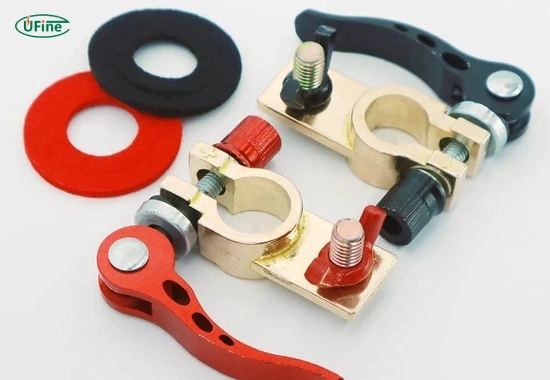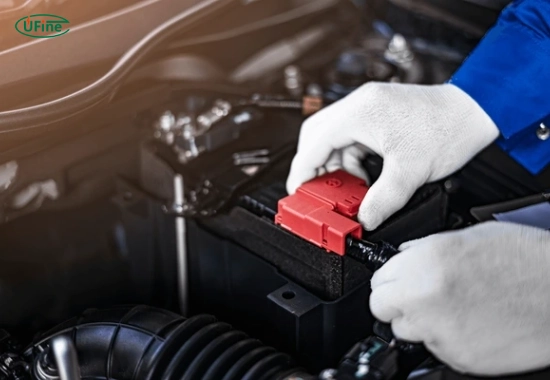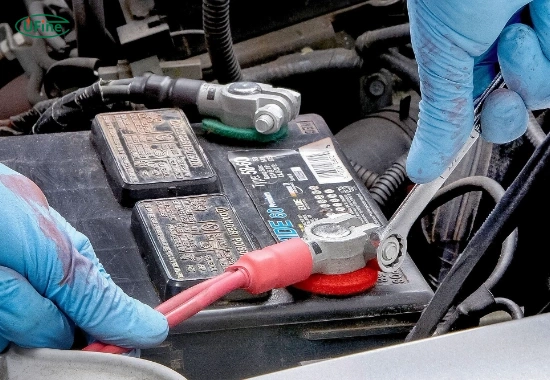Battery terminals are critical components in the electrical system of any vehicle or machinery. They connect the battery to the vehicle’s electrical system, ensuring a smooth flow of current. However, over time, these terminals can develop problems that may lead to reduced performance or even complete failure of the battery. Understanding what causes a bad battery terminal and how to prevent it is essential for maintaining your vehicle’s reliability and avoiding costly repairs.
This article explores the common causes of bad battery terminals, the signs to look out for, and actionable tips to prevent these issues. By the end, you’ll have a solid understanding of how to keep your battery terminals in excellent condition for longer-lasting performance.
Part 1. What is a battery terminal?
Battery terminals are the metal connectors at the top or side of a battery. These terminals act as the interface between the battery and the electrical system, enabling power transfer. They typically come in two types: positive (+) and negative (-), and are made of materials such as lead, brass, or copper.
Without properly functioning terminals, your battery won’t be able to deliver power to the starter, ignition, lights, or any other electrical components.
Part 2. What causes a bad battery terminal?
Several factors can contribute to a bad battery terminal. Here are the most common causes:
1. Corrosion
Corrosion is one of the leading causes of bad battery terminals. It occurs when the sulfuric acid inside the battery releases gases that react with the metal terminals, forming a white, bluish, or greenish residue. This residue can block the flow of electricity, leading to weak or non-existent connections.
2. Loose Connections
Suppose you don’t tightly secure the battery terminals to the battery posts. In that case, they can cause electrical arcing, which damages both the terminals and the posts. Loose connections also lead to inconsistent power delivery, resulting in starting issues.
3. Wear and Tear
Over time, the terminals can degrade due to repeated exposure to heat, cold, and moisture. This natural wear and tear weaken the terminal’s ability to hold a firm connection, making it susceptible to failure.
4. Battery Acid Leaks
A leaking battery can spill acid onto the terminals, accelerating corrosion and damaging the surrounding components. Acid leaks are often caused by overcharging, cracked battery casings, or manufacturing defects.
5. Poor Quality Materials
Low-grade terminals made from inferior materials are more likely to corrode or break. Investing in high-quality battery terminals can significantly reduce the likelihood of terminal failure.
Part 3. What are the signs of a bad battery terminal?
If you’re experiencing issues with your vehicle’s electrical system, it could indicate a problem with the battery terminals. Here are some common signs to watch for:
1. Difficulty Starting the Vehicle
A bad terminal can prevent the battery from delivering enough power to the starter motor, leading to slow or failed starts.
2. Corrosion Build-Up
Visible corrosion on the terminals is a clear sign of trouble. It often appears as a white, powdery substance but can also be bluish or greenish.
3. Dim or Flickering Lights
Bad terminals can cause inconsistent electrical flow and dim or flickering headlights and interior lights.
4. Battery Warning Light
If the battery warning light on your dashboard illuminates, it could mean the terminals are preventing the alternator from charging the battery effectively.
5. Cracks or Damage
Physical damage to the terminals, such as cracks or bends, can prevent a secure connection and lead to performance issues.
Part 4. How to fix a bad battery terminal?
If you suspect your battery terminals are bad, you can often resolve the issue with a few simple steps:
1. Clean the Terminals
Remove the battery cables and clean the terminals with baking soda and water. A wire brush can help remove stubborn corrosion. Be sure to wear gloves and safety glasses to protect yourself from acid exposure.
2. Tighten Loose Connections
Inspect the terminals to ensure you securely fasten them to the battery posts. Use a wrench to tighten any loose connections.
3. Replace Damaged Terminals
If you find the terminals cracked, bent, or heavily corroded, replace them with new ones. Ensure the replacements are compatible with your battery and made from high-quality materials.
4. Apply Anti-Corrosion Products
After cleaning or replacing the terminals, apply an anti-corrosion spray or petroleum jelly to help prevent future corrosion.
Part 5. How to prevent a bad battery terminal?
Prevention is always better than repair. Here are some practical tips to keep your battery terminals in good condition:
1. Regular Inspections
Check your battery terminals at least once a month for signs of corrosion, damage, or loose connections.
2. Keep Terminals Clean
Regularly clean the terminals using baking soda and water to remove dirt and corrosion.
3. Use Terminal Protectors
Install felt washers or terminal caps to minimize exposure to corrosive gases and moisture.
4. Avoid Overcharging
Overcharging your battery can cause acid leaks, which accelerate terminal corrosion. Use a smart charger to prevent overcharging.
5. Invest in Quality Terminals
Opt for durable, high-quality terminals from corrosion-resistant brass or copper materials.
Part 6. How long do battery terminals last?
Battery terminals can last 3 to 7 years, depending on usage, maintenance, and environmental conditions. Regular care and attention can extend their lifespan significantly.
Part 7. FAQs
-
Why do battery terminals corrode?
Battery terminals corrode due to the release of sulfuric acid gases from the battery. These gases react with the metal terminals, causing a chemical build-up and corrosion. -
Can I drive with corroded battery terminals?
Driving with corroded terminals is not recommended, as it can lead to poor electrical connections, reduced battery performance, and even complete battery failure. -
How do I clean corroded battery terminals?
To clean corroded terminals, disconnect the battery cables and scrub the terminals with a mixture of baking soda and water using a wire brush. Rinse with water and dry thoroughly. -
What happens if my battery terminals are loose?
Loose terminals can cause inconsistent power delivery, electrical arcing, and damage to the battery posts. This can result in starting problems and reduced battery life. -
How much does it cost to replace battery terminals?
Replacing battery terminals typically costs between $10 and $40, depending on the quality of the terminals and whether you do it yourself or hire a professional.
Related Tags:
More Articles

How to Choose the Best Floor Scrubber Battery for Commercial Cleaning?
Selecting the ideal floor scrubber battery ensures a long runtime, rapid charging, and minimal maintenance for efficient commercial cleaning operations.
Battery for Blower vs Battery for Leaf Vacuum: Which One Should You Choose?
Battery for blower vs leaf vacuum—learn the key differences in power, fit, and runtime to choose the right battery for your outdoor tool needs.
How to Choose the Right Battery for Blower?
Choosing the right blower battery? Consider voltage, capacity, chemistry & usage. This guide helps match the best battery for peak performance.
How to Choose the Best Insulated Battery Box for Lithium Batteries?
Choosing the Best Insulated Battery Box for Lithium Batteries? Discover key factors such as size, material, and safety for optimal protection and performance.
7 Critical Elements on a Lithium Battery Shipping Label
What must be on a lithium battery shipping label? Learn 7 key elements to ensure safety, legal compliance, and correct handling across all transport modes.






